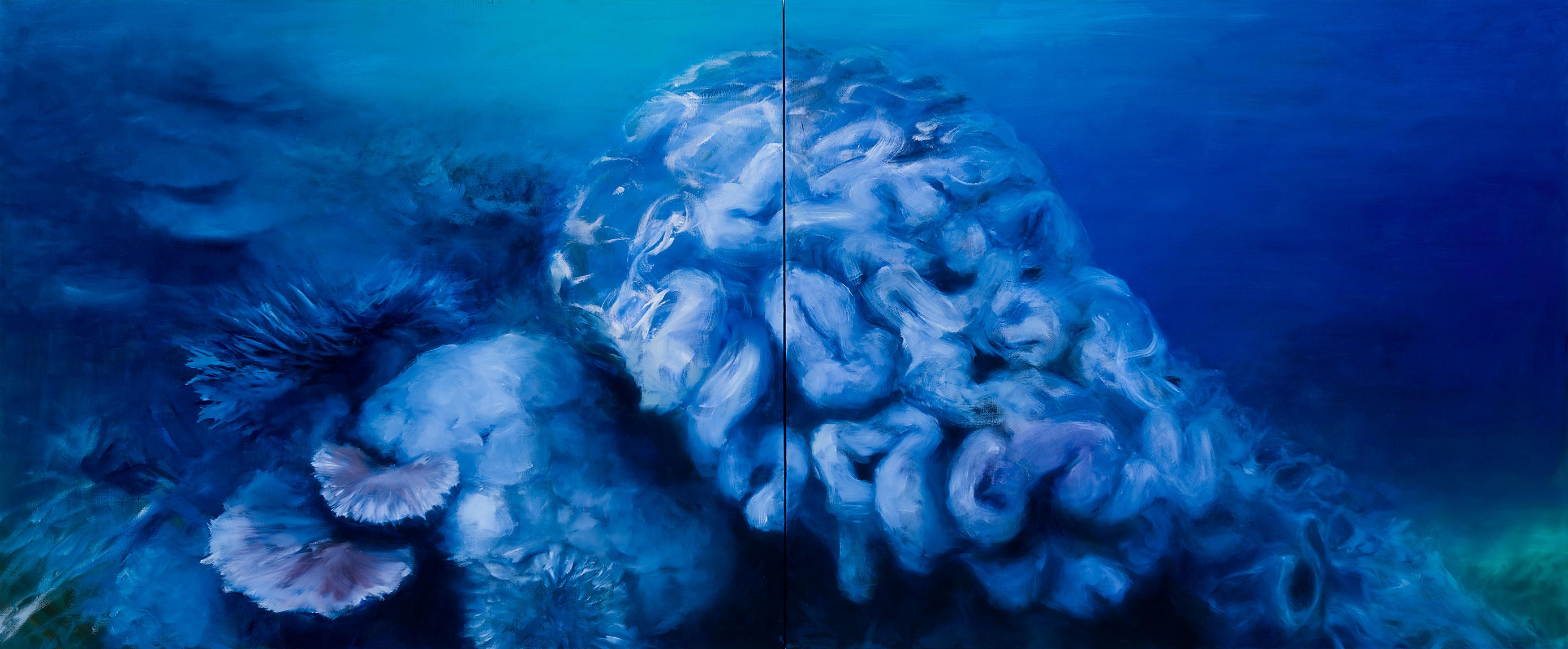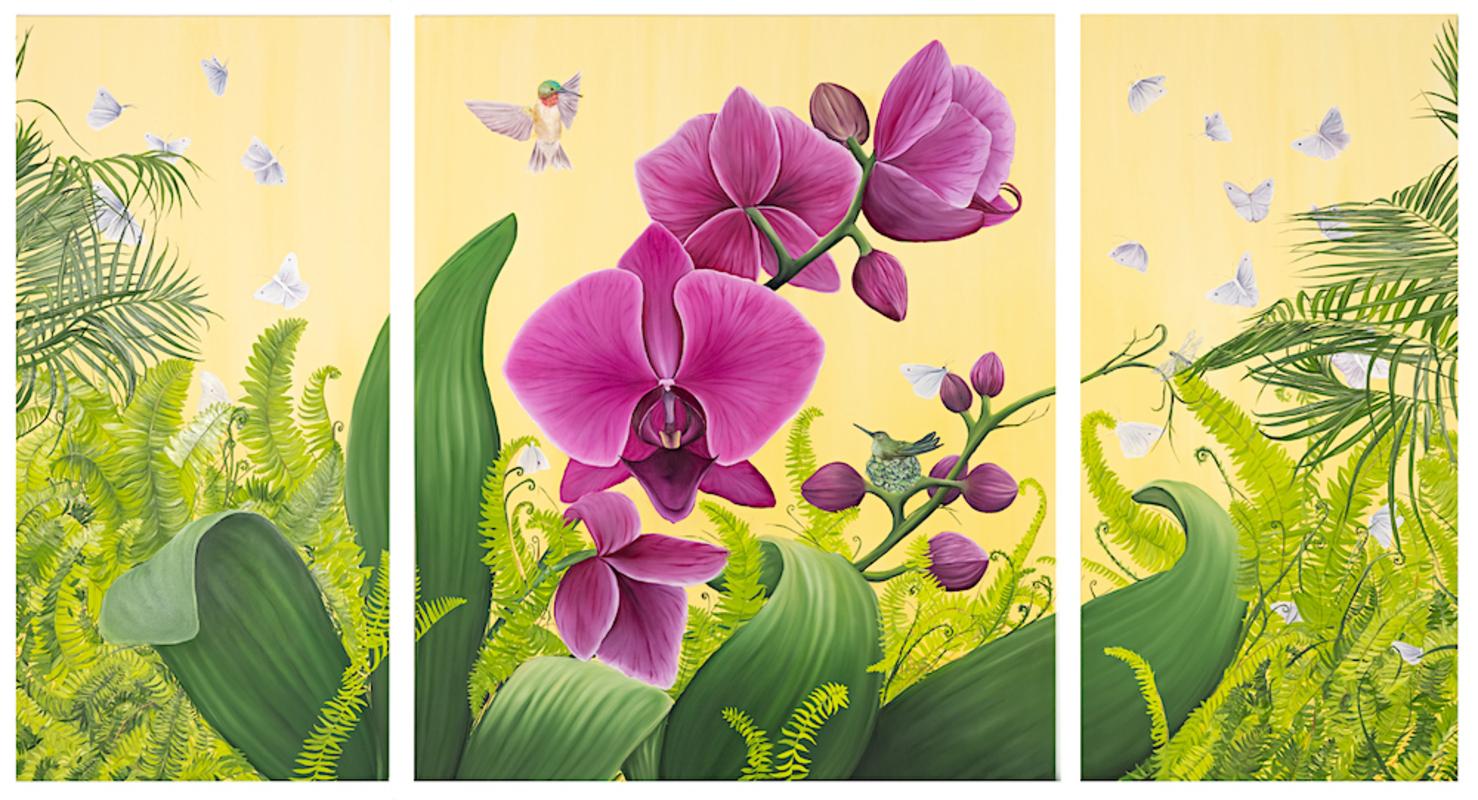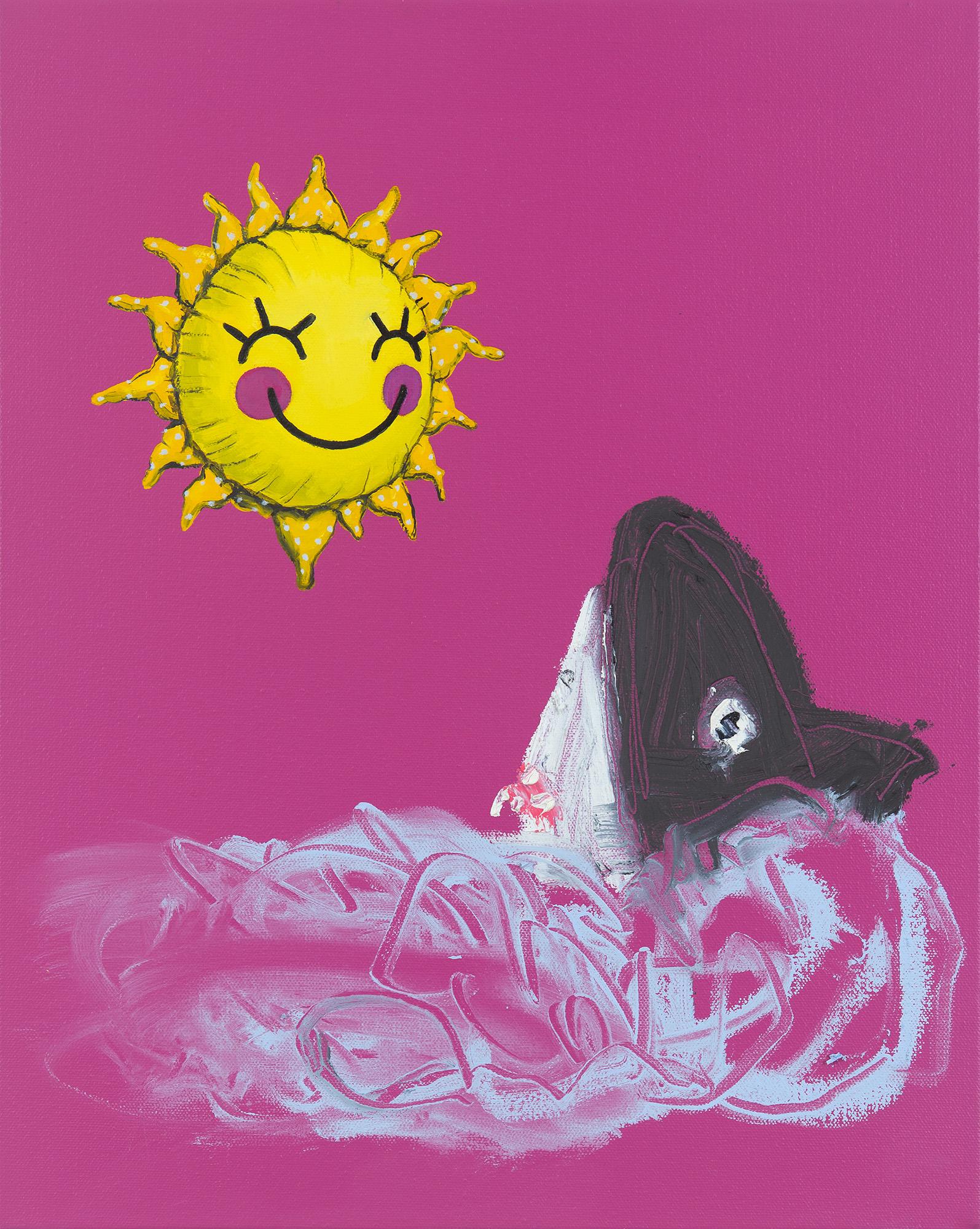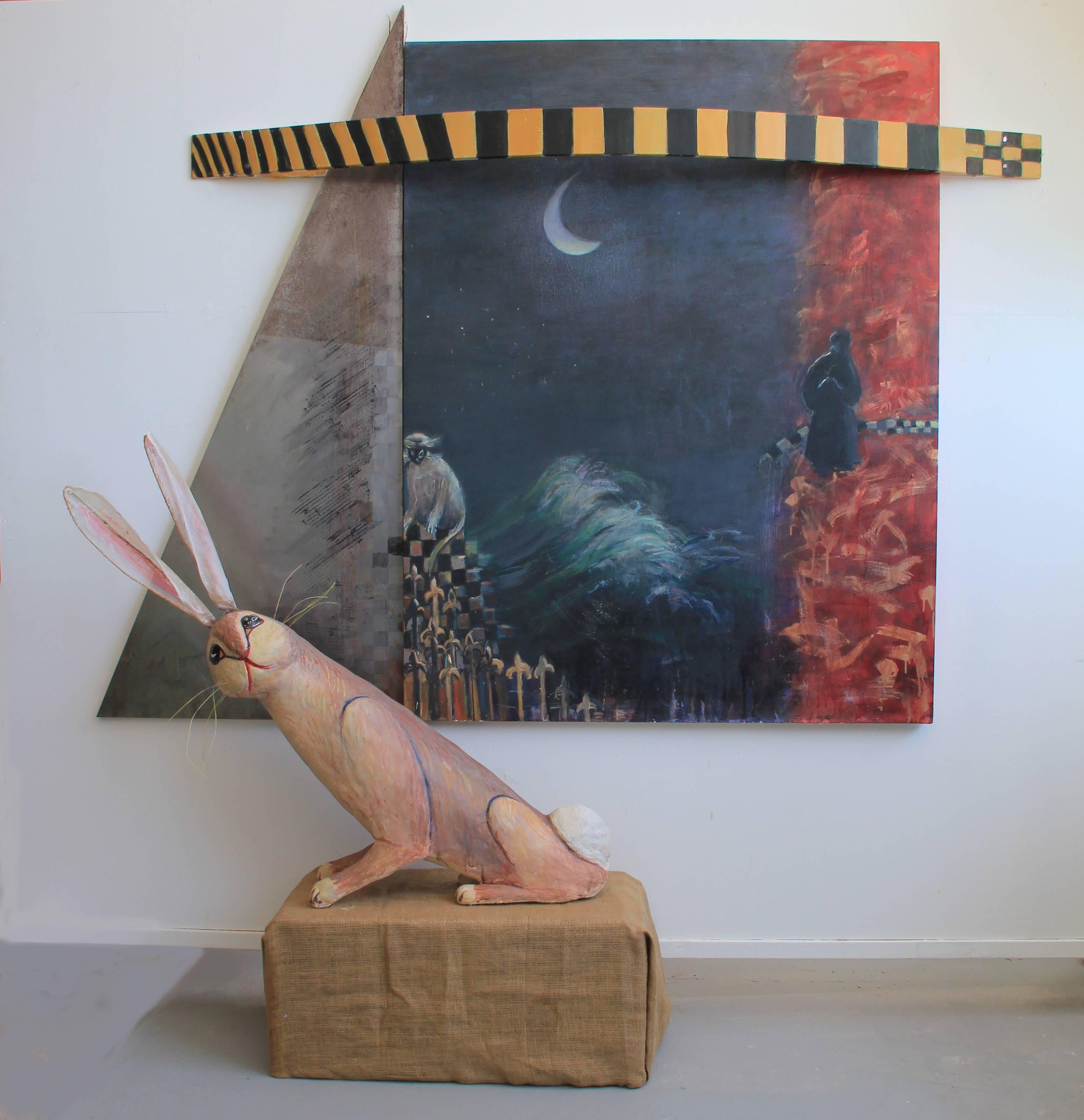Items Similar to Venetian School, Ottoman Honey Merchant
Want more images or videos?
Request additional images or videos from the seller
1 of 4
UnknownVenetian School, Ottoman Honey Merchantc. 1620
c. 1620
About the Item
This incredibly rare early depiction of an Eastern Mediterranean or North African honey merchant is thought have been painted circa 1620. It predates the Flemish-French painter Jean Baptiste Vanmour (1671-1737) by around 100 years. Vanmour has been considered, until the emergence of this painting, to be the earliest and most refined recorder of Ottoman secular life.
In the present painting, the honey merchant sits in his carpeted tent in obvious control of the trade around him. His accountant sits in deference whilst the apiarists and their workers present their straw skeps, or hives. This fascinating scene of everyday life in the Ottoman world, an Empire which included the Eastern Mediterranean and North Africa, illustrates much more than at first glance. Such an early depiction executed in oil on canvas is exceptional. Aside from the two iconic painters Gentile Bellini (active about 1460; died 1507), with his portrait of the Sultan Mehmet II of 1480 in the National Gallery, London and the aforementioned Van Mour, there are scarce western depictions of Ottoman or North African existence.
The artist of Ottoman Honey Merchant was probably Venetian both on stylistic and cultural grounds. The artist seems to be aware of the Bassano family of artists, reflecting their same blocky figures. The book-keeper turned away from the viewer is also familiar stylistically to the Bassano dynasty. Certainly the strong and particular narrative content suggests the recording of a first-hand experience, although the potential name of this itinerant artist is not currently known.
Venetians were still the largest foreign community in Istanbul during the sixteenth century and remained the Ottomans’ most important international trading partners well into the seventeenth century. This mutually beneficial relationship provided each partner with access to key ports and valuable goods. Though territorial wars intermittently interrupted their relationship, both empires relied on trade for their economic well-being. As a Venetian ambassador expressed, ‘being merchants, we cannot live without them.’ The Ottomans sold wheat, spices, raw silk, cotton and ash (for glass making) to the Venetians, while Venice provided the Ottomans with finished goods such as soap, paper and textiles. The same ships that transported these everyday goods and raw materials also carried luxury objects such as carpets, inlaid metalwork, illustrated manuscripts and glass.
Honey was a highly significant commodity in Ottoman Empire during the period 1200 to 1700. It was produced in huge quantities in almost every non-arid coastal region, from the Black Sea all the way to modern day Morocco, although it was most abundantly harvested in Attica and Turkey. The honey was used as a sweetener but also as a preservative for fruits and fresh produce like meat, the wax from the bees was a pleasant-smelling core source of lighting and the honey could also be used medicinally as a natural antiseptic. Unsurprisingly, the Ottoman rulers had their own tax code for honey, with the duty collected being one akcËeor two akcËes from each beehive, depending on the locality and custom.
The painting is redolent with period detail: the merchant sits on a flat weave rug; in front of him is a painted tray (possibly either metal or papier maché) with a brass coffee pot and a white, glazed cup and saucer. He wears prayer beads on his wrist. The blue and white tent has been erected close to a town gateway which can bee seen beyond. The book-keeper wears what appears to be a black burnous with a white hood; this garment derives from the Berber Nomadic tribes and therefore strongly suggests that the scene could be identified as being North African. To the right are three black men, almost certainly enslaved (the middle of the three being heavily disguised in a dark hood). There was an ancient slave trade across the Sahara to the Mediterranean coast and also up the east coast of Africa and the Red Sea as there were restrictions on the enslavement of Muslims, “pagan” areas further to the south became an important source of enslaved people. Ottoman areas of Anatolia and Attica tended to enslave Christians from the Black Sea and the Balkans, often prisoners of war. Therefore, the existence of the three figures to the right emphasises the likely location of this picture as being North Africa.
A secular painting of such antiquity of any trade is profoundly rare. But the fact that the trade illustrated is the buying and selling of honey and beeswax is even more enthralling, it being one of the most universal and ancient of foods, sources of light and medicine. There is evidence of human harvesting of honey from over 8,000 years ago. And the honeybee itself has become a symbol of the natural health of the planet: bees are vital for the preservation of ecological balance and biodiversity in nature. They provide one of the most recognisable ecosystem services, that being pollination, which makes production of food possible. By doing so, bees protect and maintain ecosystems as well as animal and plant species, and contribute to genetic and biotic diversity. Bees also act as indicators of the state of the environment. Their presence, absence or quantity tells us when something is happening with the environment and when appropriate action is needed.
This painting is therefore a uniquely complex and layered object, addressing the history of art, trade, culture, race, dress, custom, food, and natural sciences.
- Creation Year:c. 1620
- Dimensions:Height: 30.32 in (77 cm)Width: 40.56 in (103 cm)
- Medium:
- Period:Early 17th Century
- Condition:Condition report available upon request.
- Gallery Location:London, GB
- Reference Number:1stDibs: LU673314323322
About the Seller
5.0
Vetted Seller
These experienced sellers undergo a comprehensive evaluation by our team of in-house experts.
Established in 1990
1stDibs seller since 2017
40 sales on 1stDibs
Typical response time: 2 hours
- ShippingRetrieving quote...Ships From: London, United Kingdom
- Return PolicyA return for this item may be initiated within 1 day of delivery.
More From This SellerView All
- An Artist Grinding Colours, Possibly a Self-PortraitLocated in London, GBJan Kupetsky (1667 - 1740) Czech School An artist grinding colours, possibly a self-portrait Oil on canvas Signed, verso : "Joseph Prinzig" Provenance: Private Collection, Hungary ...Category
Late 17th Century Paintings
MaterialsCanvas, Oil
- The Adoration of the ShepherdsLocated in London, GBFollower of El Greco The Adoration of the Shepherds Oil on canvas The present work bares close similarity to a painting of the same name in the collection of the Museo del Prado, Ma...Category
17th Century Paintings
MaterialsCanvas, Oil
- 18th Century Neoclassical Oil Painting of the Trojan War: Briseis & AchillesBy James ThornhillLocated in London, GBJames Thornhill (1674-1735) Oil on canvas 12 x 14 inches; 16 ½ x 18 ½ in. Inc. frame The subject matter and inclusion of herms on both sides shows the influence of Louis...Category
Early 18th Century Old Masters Figurative Paintings
MaterialsOil, Canvas
- 18th Century English Oil Landscape Painting: Elegant Figures alongside River WyeBy Attributed to William MarlowLocated in London, GBAttributed to William Marlow (English, 1740-1813) Elegant Figures alongside the River Wye 1790 131 x 152 cm, inc. frame This quiet bucolic scene shows figur...Category
Late 18th Century Old Masters Figurative Paintings
MaterialsCanvas, Oil
- A Portrait of a Gentleman, thought to be Moses Diego Lopez PereiraLocated in London, GBAustrian School, 18th Century A Portrait of a Gentleman, thought to be Moses Diego Lopez Pereira, 1st Baron d’Aguilar, in an elaborate coat and a powdered wig Oil on canvas Provena...Category
18th Century Paintings
MaterialsCanvas, Oil
- St. Paul shaking off the Viper in the Island of MaltaBy Giovanni Paolo PaniniLocated in London, GBLiterature: cf. 'Catalogue of Paintings in the Wellington Museum Apsley House' by C.M. Kauffman, revised by Susan Jenkins, English Heritage in association with Paul Holberton publish...Category
1730s Paintings
MaterialsCanvas, Oil
You May Also Like
- "Ebbing Reef" Corals, Large Scale Contemporary Seascape Oil Painting (deep blue)By Karen MarstonLocated in New York, NY60"x144" large scale painting, oil on canvas, created on two joined canvases. The deep blue palette gives a sense of underwater space in this grand depiction of coral reefs. Artist, Karen Marston presents this endangered species in a grand scale to show its beauty and importance to our environment. Karen Marston is a painter living and working in Brooklyn, NY. Her work has been seen in a number of solo exhibitions in New York City. In addition to her 2018 show Harbingers, at the Owen James Gallery in Soho, other recent solos include: 2017’s To Embrace the Whole Sky with the Mind, at Station Independent Projects on the Lower East Side, Demeter’s Wrath in 2016 at the Owen James Gallery and Storm Watch...Category
2010s Contemporary Landscape Paintings
MaterialsOil, Canvas
- Malia's Garden, botanical, floral, green and pink oil paintingBy Allison GreenLocated in New York, NYAllison Green was born in Philadelphia and grew up in a nearby rural suburb. Throughout her childhood Green lived on the periphery of a lush forest, an e...Category
2010s Contemporary Paintings
MaterialsOil, Canvas
- HOMAGE TO THE CLASSICSBy Ferjo, Fernando de Jesus OliveiraLocated in Aventura, FLOriginal oil painting on canvas. Hand signed on front by the artist. Canvas is stretched. Artwork is in excellent condition. Certificate of authenticity included. All reasonable...Category
21st Century and Contemporary Surrealist Figurative Paintings
MaterialsCanvas, Oil
- In the CloudsBy Adam UmbachLocated in Greenwich, CTAdam S. Umbach Biography American, b. 1986 Adam Umbach was born in Chicago, and currently lives and works in Brooklyn, New York. After being inspired from an early age by the modern...Category
2010s Paintings
MaterialsEnamel
- Fables No. 1: Silk and Steel series - mixed media painting and sculptureBy Elaine Badgley ArnouxLocated in Burlingame, CAFables No. 1: Silk and Steel series - mixed media painting and sculpture. A wonderful, provocative, curiously mysterious and delightful painting and sculpture by Elaine Badgley Arnou...Category
21st Century and Contemporary Contemporary Still-life Sculptures
MaterialsSteel
- SOLAR WINDS / EKI, (Basque) Sun GoddessBy Julie HedrickLocated in New York, NYJULIE HEDRICK SOLAR WINDS / EKI, (Basque) Sun Goddess, 2021 oil on canvas, triptych 60 x 180 in. 152.4 x 457.2 cm.Category
2010s Contemporary Abstract Paintings
MaterialsCanvas, Oil




